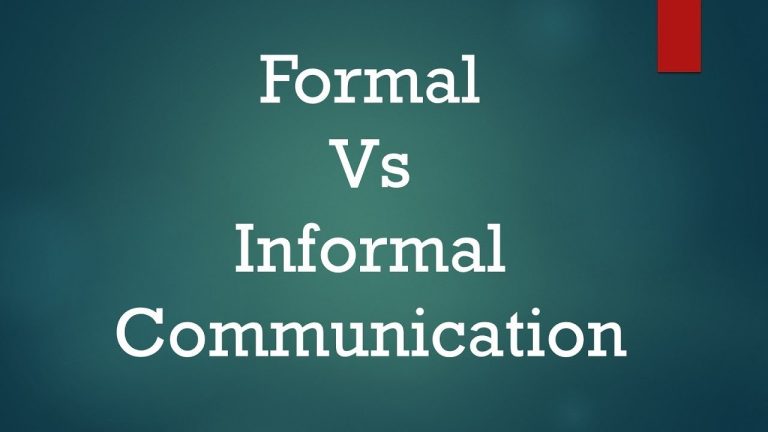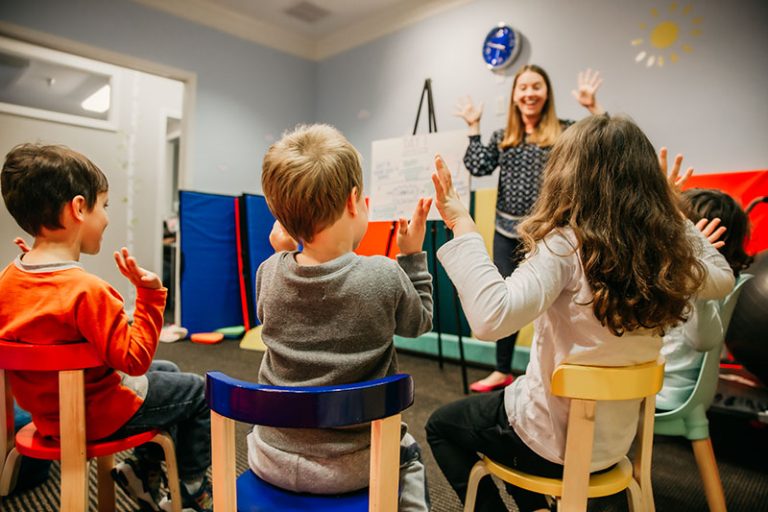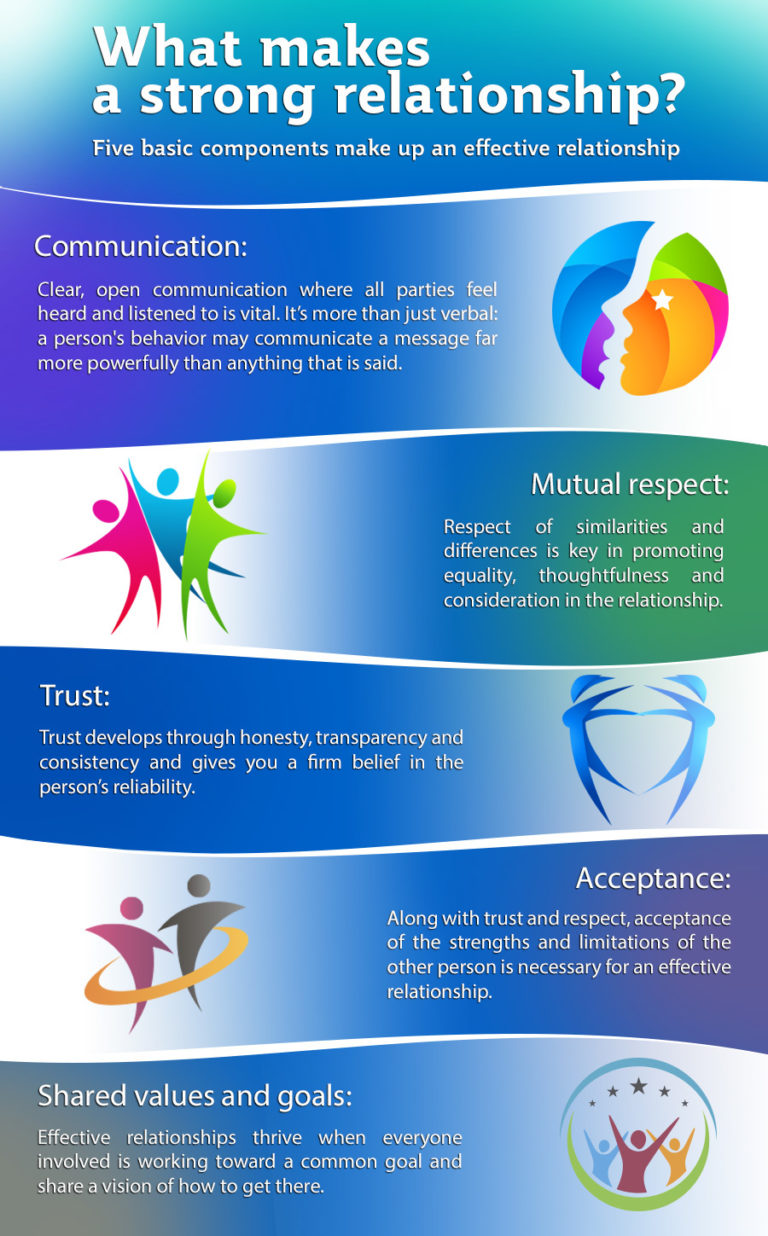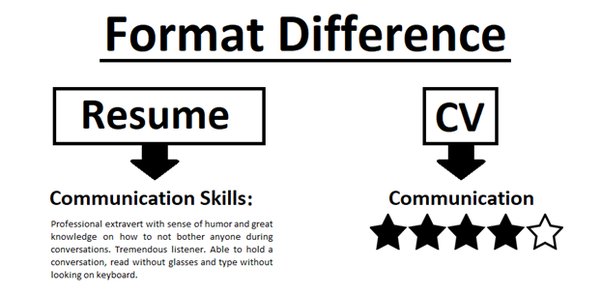How Do Communication Models Help Us
Communication models help us by simplifying the communication process through visual representations and helping us understand the components and relationships of the communication process. They provide a framework for effective communication and assist in planning communication strategies.
These models represent new ideas and thoughts on various aspects of communication, allowing us to better grasp how communication works and make it more efficient. By studying different communication models, we can identify potential obstacles and find ways to overcome them, leading to clearer and more effective communication.
These models help us navigate the complexities of communication and improve our overall understanding and implementation of effective communication strategies.
Understanding The Basics
Communication models play a crucial role in helping us understand the basics of communication. They provide visual representations of the different components and processes involved, helping us identify and analyze the flow of information between a sender and a receiver.
These models act as effective tools in planning and creating successful communication systems.
Importance Of Communication In Human Interactions:
- Effective communication is vital in human interactions as it helps convey thoughts, ideas, emotions, and information between individuals.
- Communication fosters understanding, builds relationships, and facilitates collaboration in personal and professional settings.
- It promotes clarity, reduces misunderstandings, and enables effective problem-solving and decision-making.
- Good communication skills contribute to successful leadership, teamwork, and overall personal growth.
Innate Ability Vs. The Need For Communication Models:
- While humans have an innate ability to communicate, the complexity of communication necessitates the use of communication models.
- Communication models provide a structured framework to understand the process of communication and its various elements.
- Models like the Shannon-Weaver model, the transactional model, and the C.O.N.V.E.R.S.E model help us analyze the sender, receiver, message, channel, and feedback involved in communication.
- These models assist in identifying potential barriers, improving communication strategies, and enhancing the overall effectiveness of communication.
Role Of Society In Shaping Communication Skills:
- Society plays a significant role in shaping an individual’s communication skills.
- Cultural norms, values, and expectations influence communication styles, expressions, and language choices.
- Socialization processes and education systems impact the development of communication skills, both verbal and non-verbal.
- Society influences the emphasis on listening, speaking, reading, and writing skills, which vary across different cultures and communities.
- By understanding the role of society in communication, individuals can adapt their communication style to effectively interact with diverse groups and bridge cultural differences.
Remember that effective communication is an essential skill that can be enhanced through understanding communication models and considering the influence of society. Developing strong communication skills enables effective expression of ideas, promotes harmonious relationships, and contributes to personal and professional success.
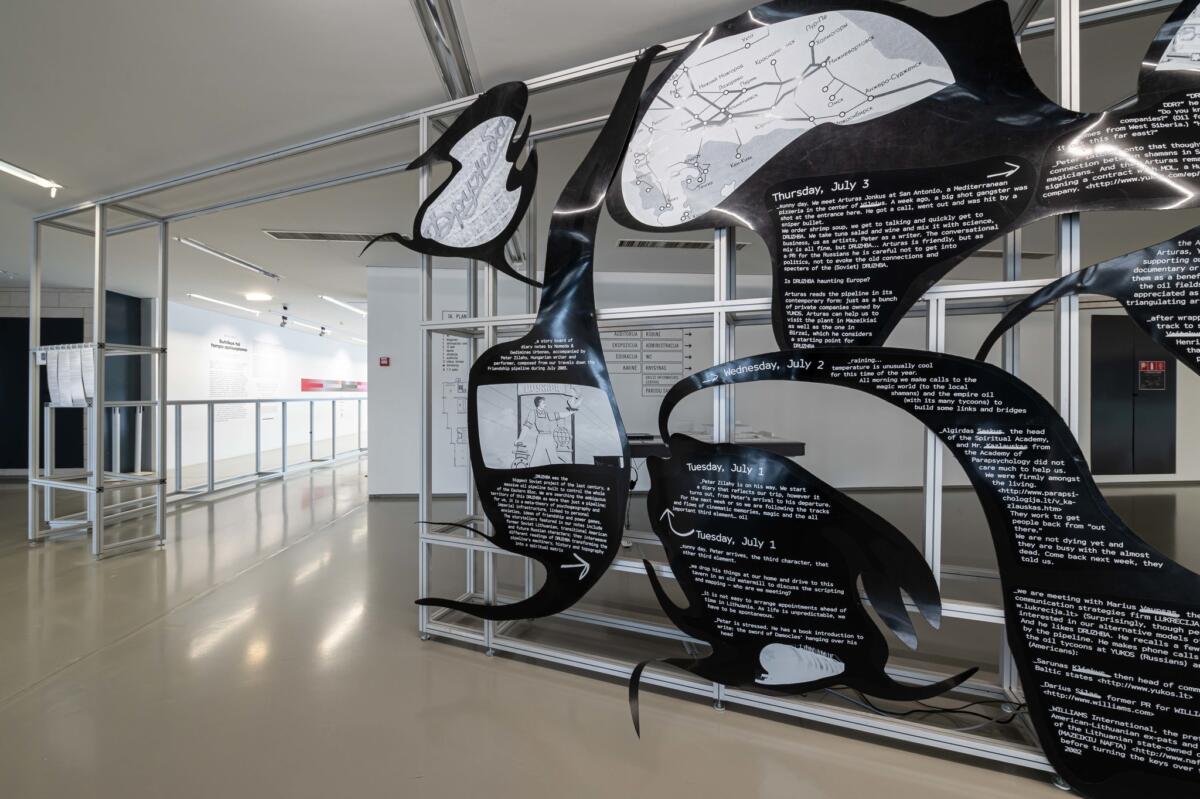
Credit: blokmagazine.com
Simplifying The Communication Process
Communication models are essential in helping us understand and simplify the communication process. By providing visual representations, these models enable us to identify and comprehend the components and relationships within communication systems, facilitating effective planning and implementation.
Definition Of Communication Models:
- Communication models are conceptual frameworks that help us understand the complex process of communication.
- These models provide a structured representation of how information is transmitted, received, and interpreted between individuals or groups.
- Communication models include various elements, such as the sender, receiver, message, channel, and feedback, which are interconnected to form a framework for understanding communication dynamics.
Visual Representation Of Communication Processes:
- Communication models offer visual representations of the different elements and interactions involved in the communication process.
- These visual representations can take the form of diagrams, flowcharts, or graphs, making it easier to comprehend and analyze the complexities of communication.
- By visualizing the communication process, individuals can better understand the flow of information, identify potential barriers or distortions, and optimize their communication strategies.
Enhancing Understanding Through Models:
- Communication models serve as tools for enhancing understanding by simplifying the complexities of communication.
- They help individuals break down the communication process into its component parts and analyze each element separately.
- By understanding the different elements and their interrelationships, individuals can identify the strengths and weaknesses of their own communication skills and make necessary improvements.
- Models also facilitate effective communication by providing a common framework for individuals to share their ideas, perspectives, and experiences.
- They enhance clarity, minimize misunderstandings, and promote effective communication practices across different contexts and cultures.
Remember that the ratio of plain paragraphs to bullet points must be 1:1 for each H3 heading. Keep the sentences brief and avoid using repetitive terms. Write in a conversational style and be mindful of SEO guidelines, ensuring your content is unique, easy to understand, and in active voice.
Planning For Effective Communication
Communication models play a crucial role in planning for effective communication by providing a visual representation of the various components and relationships involved in the process. These models describe how messages are transmitted from sender to receiver through channels, highlighting potential obstacles like noise.
Understanding these models helps in designing and implementing an efficient communication system.
Identifying And Understanding Components Of Communication:
- Sender: The person or entity who initiates the communication process by encoding a message.
- Message: The information, ideas, or thoughts that the sender wants to convey to the receiver.
- Channel: The medium through which the message is transmitted, such as face-to-face conversation, phone call, email, etc.
- Receiver: The person or entity to whom the message is directed.
- Decoding: The process by which the receiver interprets and understands the message.
- Feedback: The response or reaction of the receiver to the message.
- Noise: Any interference or disturbance that hinders the clear transmission or reception of the message.
Understanding these components helps us analyze and improve the effectiveness of our communication efforts.
Relationship Between Components In The Communication Process:
- The sender encodes a message and selects a channel to transmit it.
- The receiver receives the message, decodes it, and provides feedback.
- The quality of the message depends on how accurately it is encoded and decoded.
- The choice of channel affects the clarity and effectiveness of the message.
- Noise can disrupt the communication process and affect the understanding of the message.
- Feedback helps in confirming the understanding of the message and enables adjustments if needed.
Recognizing the interplay between these components helps us navigate the complexities of communication and achieve better outcomes.
Utilizing Communication Models For Planning And Organizing Communication:
- Communication models provide frameworks that help us understand and structure the communication process.
- Models like the Shannon-Weaver model, transactional model, or the Osgood-Schramm model offer visual representations of how communication works.
- These models assist in identifying potential barriers or breakdowns in communication.
- By utilizing communication models, we can better plan and organize our communication efforts.
- Models help us consider the various components of communication and their relationships.
- They guide us in selecting appropriate channels, encoding messages effectively, and encouraging feedback.
- Communication models enable us to evaluate and improve our communication strategies.
Understanding the components of communication, recognizing their relationships, and utilizing communication models can greatly enhance our ability to plan and execute effective communication.
Exploring Different Communication Models
Communication models play a crucial role in helping us understand the communication process. They provide a visual representation of the various components and relationships involved, making it easier to plan and implement effective communication systems. These models simplify the complex process of communication, allowing for better understanding and improved communication outcomes.
Communication is an essential part of our everyday lives, allowing us to exchange information, ideas, and emotions with others. But have you ever wondered how this complex process actually works? That’s where communication models come into play. These models help us understand and analyze the different elements and dynamics involved in communication.
Let’s explore three commonly used communication models: linear models, interactive models, and transactional models.
Linear Models
In the linear communication model, communication is viewed as a one-way process from the sender to the receiver. Here’s a breakdown of how information flows in this model:
- Sender: The person who initiates the communication by encoding a message.
- Message: The information or idea being conveyed.
- Channel: The medium through which the message is transmitted (e.g., speaking, writing, email).
- Receiver: The person who receives the message, decodes it, and interprets its meaning.
Limitations and applications of linear models include:
- Limitations: This model oversimplifies communication by disregarding the role of feedback and interaction. It assumes that communication is a linear and straightforward process.
- Applications: Linear models are suitable for scenarios where one person needs to inform or educate others without expecting immediate interaction or feedback. Examples include speeches, lectures, and mass media broadcasting.
Interactive Models
Interactive models, in contrast to linear models, recognize the importance of feedback and interaction in the communication process. This model acknowledges that communication is a two-way process, allowing for a more dynamic exchange of ideas. Here’s what you need to know about interactive models:
- Two-way communication process: Interactive models emphasize that communication involves not only sending messages but also receiving and responding to feedback.
- Importance of feedback and interaction: Feedback helps ensure that the message is understood correctly and allows for clarification or adjustment if needed. Interaction promotes active engagement between sender and receiver.
- Examples of interactive communication models: Some popular interactive models include the Shannon-Weaver model, the Schramm model, and the Osgood and Schramm model.
Transactional Models
Transactional models go a step further by emphasizing the constant exchange of information between the sender and receiver. Here are the key aspects of transactional communication models:
- Constant exchange of information: In transactional models, communication is seen as a simultaneous and ongoing process. Both the sender and receiver play active roles in encoding and decoding messages.
- Role of context in communication: Transactional models recognize that communication is influenced by various factors such as cultural background, social context, and personal experiences.
- Real-life examples of transactional communication models: Conversations, discussions, and negotiations are examples of communication scenarios where transactional models apply.
By understanding and applying these different communication models, we can improve our communication skills, enhance our understanding of others, and ensure more effective and meaningful interactions. So next time you engage in a conversation or deliver a message, consider the model that best suits the situation and make the most of your communication abilities.
Benefits And Applications Of Communication Models
Communication models are instrumental in simplifying the communication process by providing visual representations of the various components involved. These models help us plan and execute effective communication strategies, identifying obstacles such as noise, and ensuring successful transmission of messages from sender to receiver.
Enhancing Clarity And Effectiveness Of Communication:
- Communication models serve as visual representations of the communication process, providing a clear structure and framework for effective communication.
- They help individuals understand the different elements involved in communication, such as sender, receiver, message, channel, and feedback.
- By using communication models, people can identify potential barriers or misunderstandings and take steps to overcome them.
- These models offer a step-by-step guide that helps in organizing thoughts and ideas, ensuring that the message is clear, concise, and coherent.
- They enable individuals to choose the most appropriate communication channel and format based on the nature of the message and the audience.
Improving Interpersonal Relationships:
- Communication models play a crucial role in enhancing interpersonal relationships.
- They provide a foundation for effective and meaningful communication between individuals.
- By using these models, people can understand the impact of their words, tone, and non-verbal cues on others, leading to more empathetic and considerate communication.
- Communication models enable individuals to actively listen and respond, fostering mutual understanding and trust.
- They help in resolving conflicts by promoting open and honest communication, facilitating compromise and finding common ground.
Application Of Communication Models In Various Fields:
- In the business world:
- Communication models aid in effective internal communication within organizations, ensuring that information flows smoothly between different departments and levels of hierarchy.
- They assist in external communication with clients, customers, and stakeholders, helping businesses convey their messages accurately and persuasively.
- Communication models are utilized in marketing and advertising to develop targeted communication strategies that resonate with specific audiences.
- They contribute to successful negotiation and conflict resolution, allowing individuals to effectively convey their needs and interests.
- In the field of education:
- Communication models help educators design and deliver engaging lessons, ensuring that students comprehend the information effectively.
- They aid in classroom management by establishing clear expectations and guidelines for communication between teachers and students.
- Communication models facilitate effective parent-teacher communication, fostering collaboration and support for students’ educational journey.
- They are utilized in instructional design to create materials and techniques that optimize communication and learning outcomes.
- In healthcare:
- Communication models are essential for healthcare professionals to effectively communicate with patients, ensuring that medical information is conveyed accurately and understood.
- They contribute to patient-centered care by promoting active listening, empathy, and shared decision-making.
- Communication models aid in interprofessional collaboration, enabling healthcare teams to coordinate and provide comprehensive care to patients.
- In the media and journalism industry:
- Communication models guide journalists in selecting and presenting information in a clear, unbiased, and engaging manner.
- They aid in effective interviewing techniques, enabling journalists to ask relevant and thought-provoking questions.
- Communication models help in the production of various media formats, such as news articles, radio broadcasts, and documentaries, ensuring effective storytelling and audience engagement.
Frequently Asked Questions Of How Do Communication Models Help Us
How Does Communication Model Help You?
Communication models help by simplifying the communication process and providing a visual representation of how communication works. They help us understand the components and relationships involved in the communication process. For example, a linear model describes communication as a process where a sender transmits a message to a receiver through a channel, but there may be obstacles like noise that can affect the communication.
By studying communication models, we can identify the different elements of communication and how they interact with each other. This understanding allows us to plan for more effective communication strategies. Communication models also offer new ideas and perspectives on various aspects of communication.
Overall, communication models help us improve our communication skills, enhance understanding, and ensure successful message transmission between sender and receiver.
How Do Communication Models Simplify The Communication Process?
Communication models provide a visual representation of the various components and stages involved in communication, making the process easier to understand and navigate. They help individuals identify the roles of senders, receivers, messages, channels, and potential barriers to effective communication.
What Is The Significance Of Communication Models In Understanding The Communication Process?
Communication models play a crucial role in understanding how communication works by highlighting the different elements and their relationships. They provide insights into how messages are transmitted, received, interpreted, and impacted by noise or other factors. Understanding these models allows individuals to improve their communication skills and overcome potential obstacles.
How Can Communication Models Help In Planning An Effective Communication System?
Communication models serve as a foundation for planning an effective communication system. By studying different models, individuals can learn about the various approaches, strategies, and techniques that can be utilized to ensure clear, concise, and impactful communication. These models help individuals assess their communication goals, select appropriate channels, and anticipate potential challenges that may arise during the process.
Conclusion
Communication models play a crucial role in helping us understand the process of communication and making it more effective. These models provide a visual representation of the various components and relationships involved in communication, allowing us to identify and analyze them.
By studying these models, we can gain insights into how messages are transmitted and received, the role of the sender and receiver, and the potential obstacles that can hinder effective communication. Linear models, for example, describe communication as a linear process where a sender transmits a message to a receiver through a channel.
This model highlights the importance of clear and concise messaging, as well as the impact of noise or barriers on successful communication. Other models, such as the transactional model, emphasize the dynamic nature of communication, where both the sender and receiver actively participate in the process.
By understanding these communication models, we can plan and implement more effective communication strategies in various contexts, whether it be in personal relationships, professional settings, or mass communication. Communication models provide us with a framework to analyze, improve, and enhance our communication skills, ultimately fostering better understanding and connection among individuals and groups.

